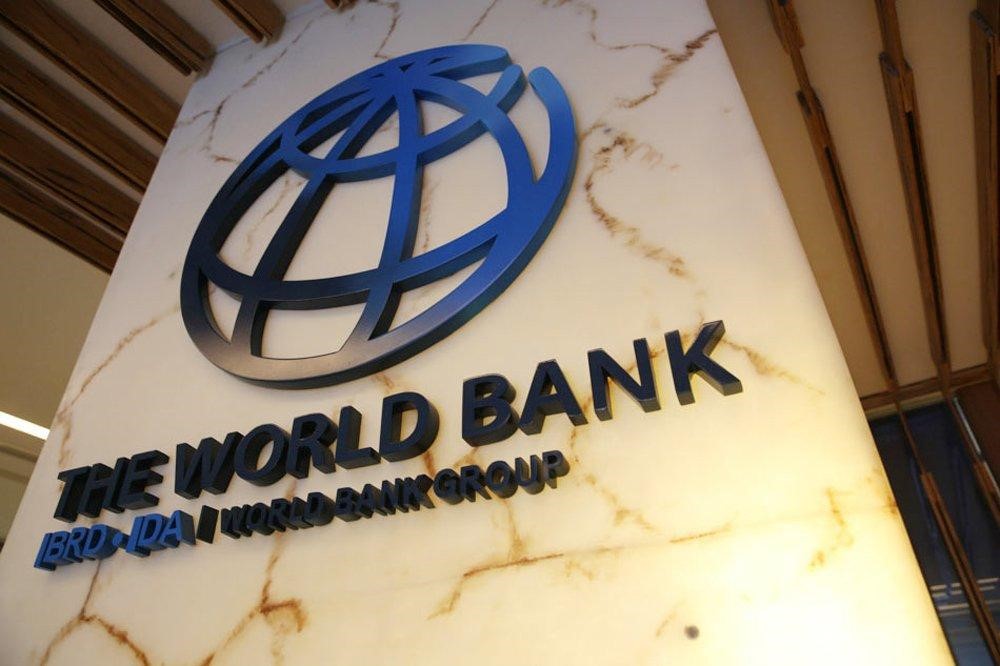

Editorial note: The Global South Media and Think Tank Forum took place in São Paulo, Brazil, last week and Our Today was there to cover it. Dr Jia Yu, director of the Department of International Development Cooperation of the Institute of New Structural Economics at Peking University, China, gave an insightful presentation at the Grand Hyatt, São Paulo, on the importance and necessity of south-south cooperation. Below is a lightly edited version of her full speech:
Distinguished guests, good morning!
I am from the Institute of New Structural Economics at Peking University, and today my speech is titled “The Rise of the Global South and China’s Responsibility”.
First, I would like to talk about the rise of the Global South. The countries of the Global South have historically accounted for a large share of the world’s total population. According to the World Bank, in 1960, this share was 73 per cent, with 2.22 billion people. Due to higher birth rates, the population has steadily increased since then, and by 2023, the proportion of the Global South’s population has reached nearly 83 per cent, totalling 6.63 billion people.
Moreover, according to United Nations projections, while the population of the Global North is expected to remain stable in the coming decades, the population of the Global South will continue to grow. By 2050, the Global South will account for 86 per cent of the world’s population, with a total of 8.3 billion people. Over half of the world’s population growth from now until 2050 is expected to occur in Africa. Among major regions, Africa will have the highest population growth rate. It is projected that by 2050, the population of sub-Saharan Africa will double, rising from 1.4 billion in 2030 to 2.1 billion people.

Now, having discussed population, let’s turn our attention to the economy. According to World Bank data, the share of the Global South in the global economy has steadily increased from 22 per cent in 1960, with a total of about US$310 billion, to approximately 39 per cent in 2023, amounting to US$41 trillion. By 2050, it is expected that three of the four largest economies—excluding the United States—will come from the countries of the Global South: China, India, and Indonesia. The United Nations Conference on Trade and Development (UNCTAD) has also compiled relevant statistics.
The share of the Global South in global export trade has risen from 25.6 per cent in 1995 to about 43 per cent in 2023, with the total value growing from US$1.31 trillion to US$10.21 trillion last year. The gap with the Global North (ie, OECD countries), which stood at US$13.35 trillion, has narrowed significantly. Looking ahead, according to the International Monetary Fund’s projections, the global GDP growth rate in 2025 will be 3.3 per cent, with OECD countries’ growth rate at just 1.8 per cent, while the Global South is expected to grow at 4.3 per cent, with China’s growth rate projected to reach 4.5 per cent.

Despite the faster economic growth in the Global South, there are significant disparities between the countries within the region. The World Bank classifies countries and regions based on income levels into four categories: low income (Gross National Income per capita under US$1,145 ), lower-middle income (US$1,146 – US$4,515), upper-middle income (US$4,516 – US$14,005), and high income (above US$14,005). Among the countries in the Global South, high-income economies make up a small portion, including Bahrain, Brunei, Singapore, Seychelles, Kuwait, Qatar, Saudi Arabia, Panama, and others—mostly oil-rich nations or countries with special advantages like Singapore. The majority of the countries are in the lower-middle and upper-middle income categories, with 51 and 54 countries respectively. The low-income and lower-middle-income countries are mostly concentrated in sub-Saharan Africa and South Asia. Of the 26 low-income countries, 24 are in sub-Saharan Africa, with the remaining two being Syria and Yemen.
After understanding the development situation of the Global South, I would like to emphasise that China’s development experience can provide valuable lessons for the Global South. Whether it is in terms of historical experiences, struggles, or the development challenges and tasks faced today, or on views regarding international order and global governance, China shares a high degree of similarity and consensus with other developing countries.

Our Foreign Minister Mr Wang Yi summarised three common features of the Global South: a political foundation of independence and self-determination, a historical mission of development and revitalisation, and a common advocacy for fairness and justice. As the world’s second-largest economy, China is assisting the countries of the Global South in developing their economies through the Belt and Road Initiatives (BRI), supporting these countries in accelerating the implementation of the 2030 Agenda for Sustainable Development, and continuously enhancing the economic resilience and autonomy of the Global South. The most fundamental demand of the Global South is development. China has accumulated rich experience in development, particularly in poverty reduction, which has been universally recognised. China’s development experience and model can offer valuable insights. Now, the Global South faces new opportunities for development.
This year, the Third Plenary Session of the 20th Central Committee of the Communist Party of China outlined the country’s development goals for the next decade, confirming that China is accelerating the establishment of a new development pattern. We will rely on the advantages of China’s super vast domestic market, expanding the depth and breadth of its openness through the promotion of dual circulation, and creating new advantages for a higher level of an open economy. China will share development opportunities with countries around the world, especially by expanding unilateral openness to the least developed countries and promoting international cooperation in industrial and supply chains.

China will also improve and advance the high-quality construction of the Belt and Road Initiatives, strengthening multilateral cooperation platforms in areas such as green development, digital economy, artificial intelligence, energy, taxation, finance, and disaster reduction. Additionally, China will prioritise major landmark projects as well as smaller, community-focused initiatives that directly benefit people’s livelihoods.
As a scholar, in addition to sharing China’s future development direction and prospects with you, I would also like to take this opportunity to introduce an economic theory derived from China’s own development experience as well as the experience of many other developing countries — New Structural Economics. The premise of a country’s economic development is the improvement of labour productivity, which in turn depends on technological innovation and industrial upgrading. According to the New Structural Economics theory pioneered by Professor Justin Yifu Lin, the realisation of technological innovation and industrial upgrading requires the joint action of both an “effective market” and a “facilitating government”. The “effective market” guides entrepreneurs to select technologies and industries based on the comparative advantage of their country’s factor endowments, allowing comparative advantage to gradually shift from labour or natural resource-intensive industries to capital-intensive industries.

The “facilitating government” needs to correct market failures, enhance the construction of both soft and hard infrastructure, and provide externality compensation for technological innovation and industrial upgrading. As practical applications, China addressed the issue of inadequate infrastructure in the early stages of reform and opening up by establishing special economic zones, processing export zones, and industrial parks. Within these zones, China improved infrastructure and the business environment, which enabled industries that matched the country’s comparative advantages to develop rapidly.
This allowed these industries to transform their comparative advantages into competitive advantages, capture international markets, accumulate capital, and promote industrial upgrading. While applying this theory to development recommendations for other developing countries, New Structural Economics has innovatively proposed the Growth Identification and Facilitation Model. This model analyses target countries from the perspectives of factor endowments, comparative advantages, and other dimensions, helping governments assess how to adapt to their own circumstances and promote industrial upgrading and structural transformation. Adhering to the motto of “integration of knowledge and practice”, we not only engage in theoretical innovation but also actively promote international policy practices, advancing the implementation of action-oriented and policy-focused projects. We have successfully conducted valuable practices in some developing countries.
Meanwhile, all of us are facing the challenge of climate change today. We emphasise that the Belt and Road Initiative and cooperation among the Global South must be green. Although China is still a developing country, it can do more than other developing countries in addressing global climate change and can play a leading role in sustainable development. China can forge a new path that uses new technologies to promote both economic development and environmental harmony. Through the green Belt and Road construction, China can provide developing countries with practical new technologies, helping them avoid repeating the mistakes of developed countries and achieve social and economic progress with a lower environmental cost. In the future, the development of the Belt and Road Initiative and human society must be green!

Over the years, our team has travelled to many places around the world, especially to several countries in the Global South, where we have successfully implemented projects based on local comparative advantages to support industrialisation. This is because creating jobs and generating export revenue are key issues that most countries in the Global South need to address in their development process.
Finally, I would like to say that our institute is not just a think tank, but a “think + do” tank. We are guided by rigorous academic theory, committed to providing scientific policy recommendations, and also assist in pushing forward action-oriented policies. I am also honoured to have the opportunity to visit Brazil at the invitation of Xinhua News Agency and to be here in the beautiful city of São Paulo. I look forward to more exchanges with all of you. Let us work together and embrace a brighter and more prosperous future for the Global South!
Thank you!
Dr Jia YU, senior operations officer and director of the Department of International Development Cooperation at the Institute of New Structural Economics, Peking University. She is responsible for the application of the New Structural Economics to the international investment practice. Her research fields focus on Chinese “Go Global” empirical studies, Industrial Park and Special Economic Zones (SEZ) diagnosis, China’s overseas investment and the interaction of the manufacturing, energy and mining sectors as well as their roles in the process of industrialization for developing countries.







Comments